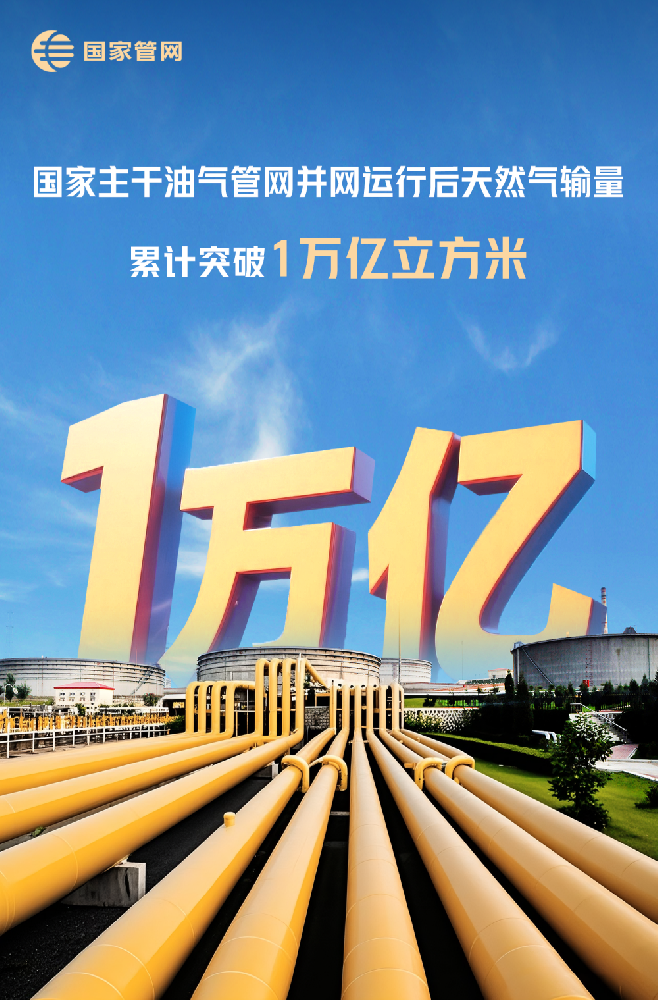
On May 23, since the integration and operation of China's main oil and gas pipelines on October 1, 2020, the natural gas transmission volume has exceeded 1 trillion cubic meters, and the highest daily gas transmission capacity has exceeded 1.1 billion cubic meters. The market-oriented reform of the operation mechanism of the oil and gas pipeline network has achieved significant results.
Data shows that in the past five years of grid connection, the load rate of China's natural gas pipeline network has increased by 12 percentage points to 80%, cross provincial pipeline prices have been reduced by 5%, and social energy costs have been saved by 12 billion yuan annually.
The maximum daily natural gas transmission capacity has increased by 48% compared to 2020, driving the apparent consumption of the country to exceed 420 billion cubic meters.
At present, the oil and gas pipeline network has achieved unified allocation and management, and a "X+1+X" oil and gas market system has been established, significantly enhancing the vitality of market entities.
The fair and open pipeline network has achieved leapfrog development. "The relevant person in charge of the marketing department of the National Pipeline Network Group introduced that the number of shippers has increased by 176 times in five years to 882, the construction period of 343 upstream and downstream projects has been shortened by 33%, 8 LNG receiving stations have been fully opened, and the cumulative processing capacity has exceeded 70 million tons. Its gas storage facilities have achieved market-oriented operation, providing storage gas services for 14 users.
The number of downstream users has exceeded 1300, and the proportion of small and medium-sized shippers in pipeline transportation has jumped from 2.1% to 10.2%, indicating a significant improvement in market allocation efficiency.
Currently, China is accelerating the construction of the "Four Strategic Channels+Five Vertical and Five Horizontal" natural gas backbone pipeline network, and will build 2000 kilometers of pipelines by 2025.
The China Russia East Gas Pipeline is operating at full capacity, and key projects such as the Sichuan East Gas Pipeline 2 are accelerating construction.
It is expected that by 2030, the number of users in the main oil and gas pipeline network will exceed 3000, and the proportion of small and medium-sized shippers will increase to 30%, further consolidating the foundation of energy security.
With the continuous advancement of China's oil and gas pipeline network construction, deepening technological innovation, and gradual improvement of market mechanisms, the long-term mechanism for stable natural gas supply will become more sound, providing solid and powerful guarantees for China's energy security and sustainable economic and social development.